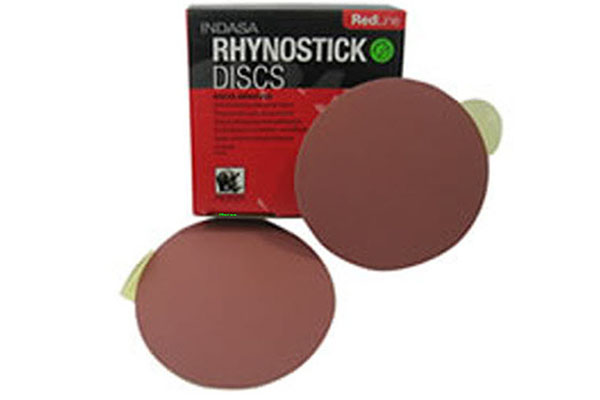Using Abrasives to Improve Your Jigs and Fixtures
Posted by The 2Sand.com Team on 05 14 2019
Many jigs and fixtures used in metalworking, plastics fabrication, and woodworking need to hold parts from moving as they are milled or otherwise worked. Although there are a variety of products on the market designed to allow you to apply non-skid surfaces where needed, most are simply some form of abrasive paper, typically 40-60 grit and self adhesive. Because trades people generally have easy access to a wide range of abrasive papers, it is easy and convenient for us to modify this concept to use it in our own work. And it is possibly most useful when applied to sleds and holding fixtures that clamp parts in place.
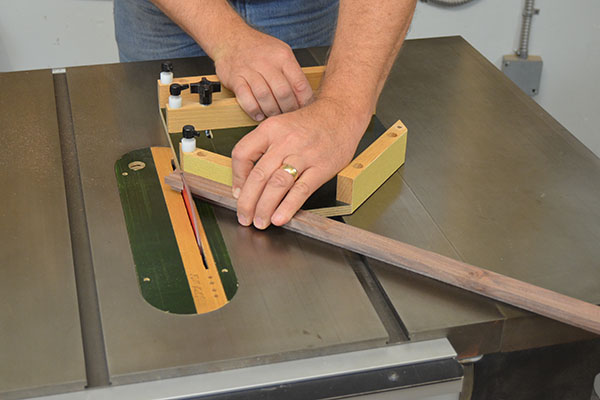
A great example is a routing fixture built for milling chair legs. Designed to hold leg
blanks as they are trimmed to the shape of the sled, the leg blanks are held on
the sled with toggle clamps. Because the sled base is relatively smooth and the
pads on the toggle clamps are flexible, the blanks are subject to vibration and
may even move on the sled while being cut. Although pins or screws could be
used to fix the leg blanks in place, they require time to set and usually damage
the surfaces of the blanks.
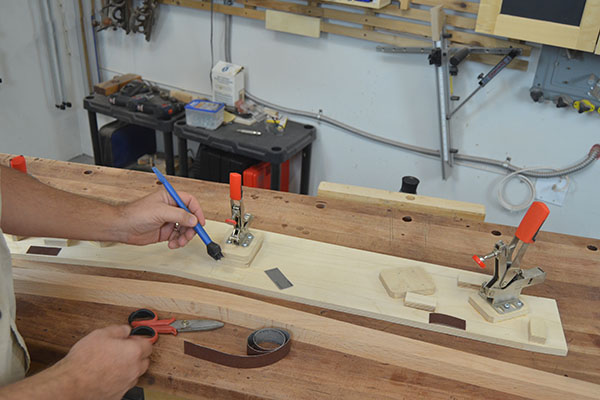
Bonding
To cover smaller surfaces, PSA (pressure sensitive adhesive) sanding disks can be used instantly. Double faced mounting tape works very well with all abrasive backers and bonds pretty permanently after 24 hours. Paper-backed sheets can be bonded using common wood glues, and epoxies will bond nearly any two materials together when used properly.
Practical Application
For the chair leg routing fixture, we decided to cut short sections of sanding roll and bond them to the sled base directly under the toggle clamps. Once secured in place, they provided a surprising amount of friction, keeping the blanks firmly in place during the trimming operations. It is important to select the abrasive to be used carefully; too fine a grit will provide inadequate friction, but a grit that is too coarse can mark off on the parts and may hold them too high above the clamping surface. We chose a 120 grit sanding roll which proved to be just about perfect for this application.
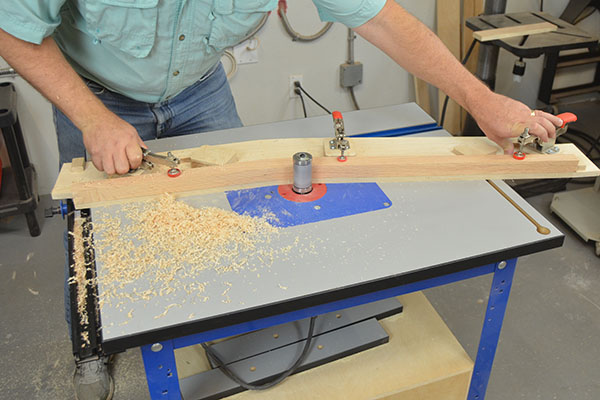
We have used this trick extensively in our shop over the years. It works well for
jigs that guide hand-held parts like miter gauges and sleds.
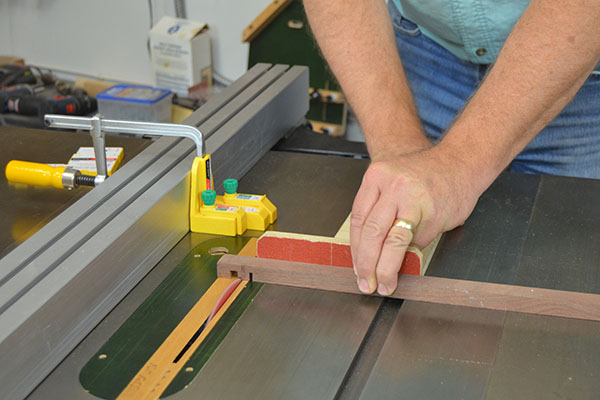
Because there is such a
wide variety of sanding supplies and bonding agents at a crafts
person’s disposal, the only real limit to using this technique is your own
imagination.
Happy sanding!


